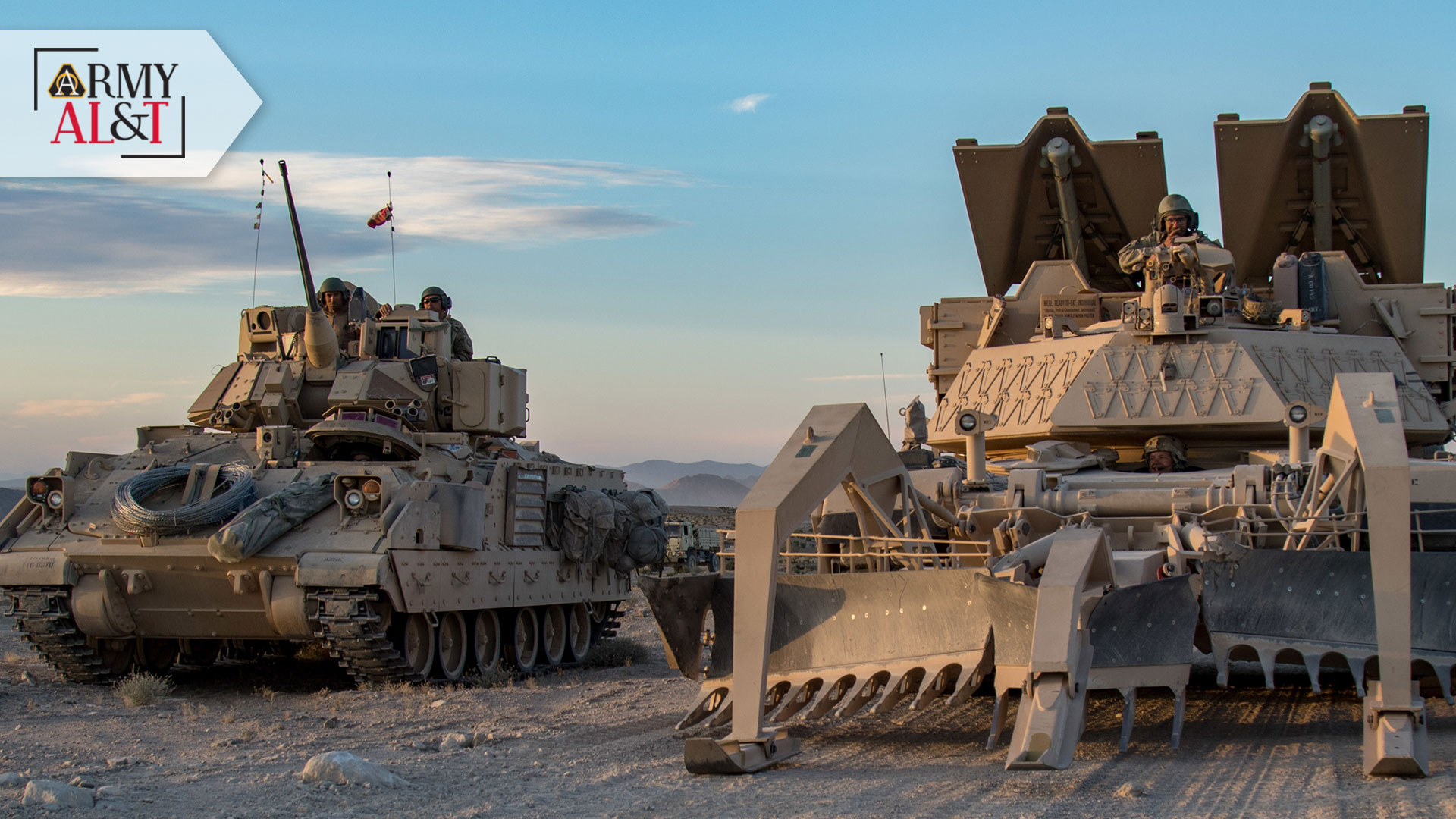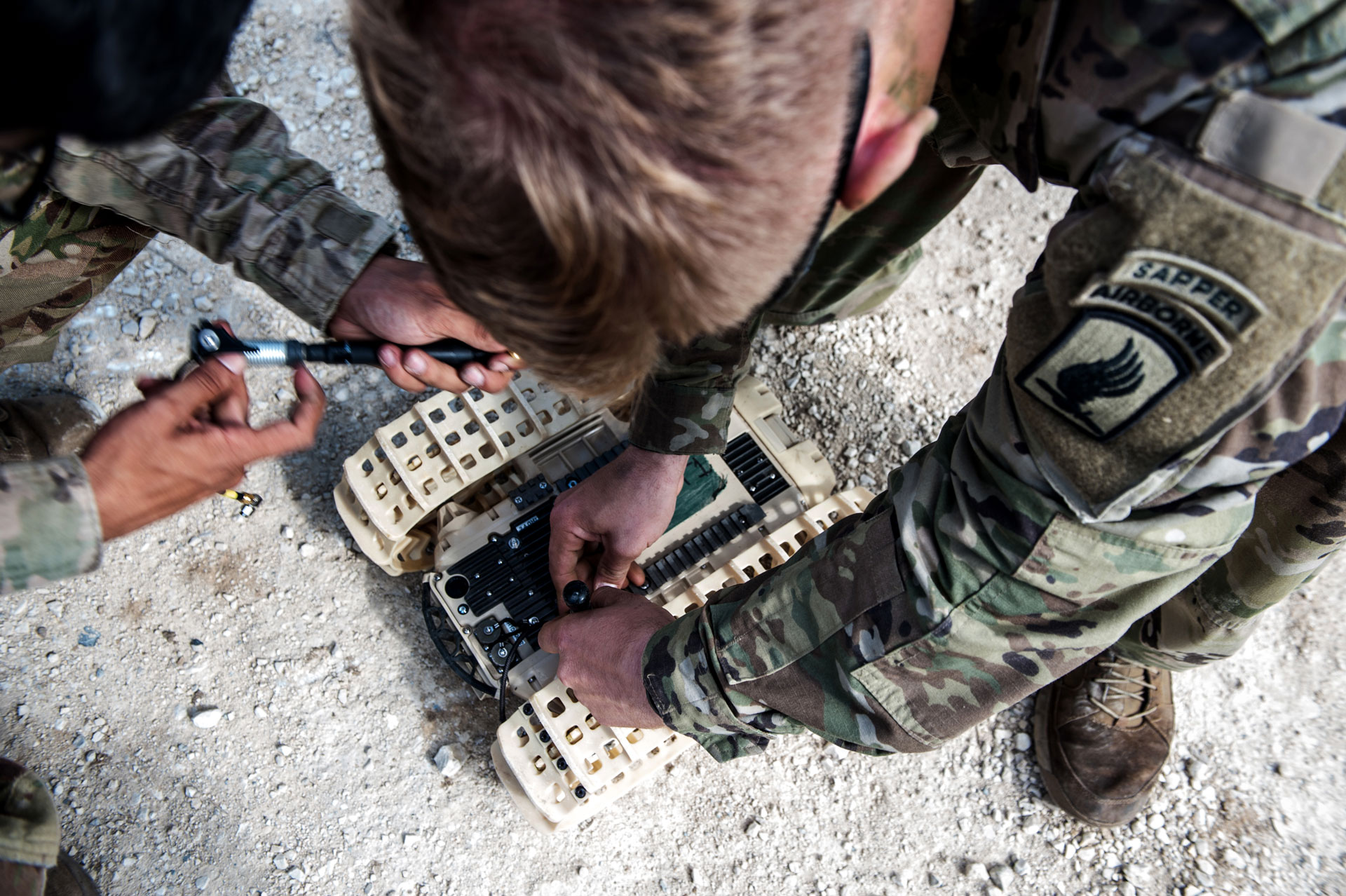
FROM THE ARMY
ACQUISITION EXECUTIVE
BRUCE D. JETTE
By giving the Army acquisition team authority and the necessary training, we can better deliver overmatch capabilities to Soldiers.
Having served in the military for nearly 30 years, I know firsthand the value of empowering and trusting subordinates to do what is best for the Army and our Soldiers. In May 2002, I was “afforded” the opportunity to take robots into combat by forming a small team that integrated Defense Advanced Research Projects Agency robots with government and commercial off-the-shelf items. In only 28 days, we took them into caves in Afghanistan rather than sending in Soldiers with grappling hooks and grenades. Robots are now broadly used in combat operations. Perhaps more importantly, this instigated the Army and DOD’s rapid acquisition model.

Army combat engineers assigned to the 173rd Airborne Brigade test Qinetiq North America’s Dragon Runner 10 at Grafenwoehr Training Area, Germany, in September. Now widespread, the use of robots in combat stems from rapid acquisition efforts undertaken by Jette and others who first brought the technology to Afghanistan in 2002. (U.S. Army photo by Sgt. Henry Villarama, 173rd Airborne Brigade)
The point of this illustration is that Army leadership empowered and trusted my team and me to deliver a badly needed capability to protect our Soldiers and enable them to return home safely. There was risk, but also reward. It is still a source of pride, and a lesson in leadership that I intended to pay forward. Sixteen years later, as the Army acquisition executive, I was given that opportunity. With authority from Congress, the secretary of the Army and the chief of staff directed improvements in the acquisition process to field capability fast, and I was again in a position of authority to make a difference.
While Acquisition Category (ACAT) I programs remain, by law, at my level, I have delegated all other milestone decision authority—on ACAT II, III and IV programs—to my program executive officers, who, at their discretion, may delegate decision-making to their program or product managers. Powering down decision-making to the appropriate level of the acquisition process improves the Army’s ability to provide timely capabilities to Soldiers while remaining fiscally responsible.
It is my strong belief that senior leaders must set an example by allowing their team to do their jobs, to make decisions, to manage risk, and to execute at the appropriate decision-making level. As the Army acquisition executive, I oversee a portfolio that includes the total life cycle management of more than 700 programs. This delegation of authority allows our entire organization and thereby Army senior leaders to reach key decision points and field capabilities to the Soldier faster because there are fewer levels of review involved in each decision.
There are a few important guidelines, however, that I ask my program executive officers, program and product managers and other professionals throughout the acquisition workforce to follow:
- Examine all ways to effectively use the funding allocated by Congress to achieve the desired program outcome in the most timely and efficient manner. We must remain fiscally responsible at all times.
- Design the most appropriate schedule for your program. Let me know the schedule as agreed upon and why—and be as aggressive as possible in getting capability to Soldiers.
- Keep me up to date on program performance. It is important for me to know where the challenges are likely to appear.
- Let me know the risk and how it is being managed. If well-managed risk does not turn out as planned, I will ensure that there are no adverse effects to the team. Likewise, if things turn out well, I will ensure that the team gets the credit.
Consistent with my initiative to “power down” authority, I have placed a high priority on talent management, which is critically important to the acquisition process because it ensures that the best and brightest team members are in the right positions to better support our Soldiers. Training, which includes an appropriate level of education, is key to our efforts in this area.

Soldiers from the 2nd Armored Brigade Combat Team, 1st Infantry Division are the first to receive the Enhanced Night Vision Goggle – Binocular and the Family of Weapon Sights – Individual, in September at Fort Riley, Kansas. The Army acquisition executive has put in place new policies that field capabilities faster by removing layers of review throughout the acquisition process. (U.S. Army photo by Maj. Bryce Gatrell, 2nd Brigade Combat Team, 1st Infantry Division Public Affairs)
Experience is also an important factor. I was an armor officer. I’ve had four company commands, two overseas tours and about 12 years as a tanker that gave me an in-depth understanding of the operational environment. When I retired from the Army, I started my own small business, and it was one of the best things I could have done—it taught me a great deal about managing budgets on a larger scale and spending money efficiently and effectively. My operational and small business experience allows me to understand the challenges at different levels of the acquisition enterprise, much in the same way our leaders, with in-depth training and experience, can see the nuances of those challenges at the production level.
Perhaps the most crucial part of enabling decision-making at the appropriate level is the dialogue it opens between headquarters and the team members throughout the organization. As I told my son when he was at West Point, there’s no organization with perfect leadership, but that doesn’t mean you should avoid being a leader or entering a position where you can affect an issue. Take note of how your predecessors dealt with challenges so you can envision how to address an issue ahead of time—reflect, talk to other people and get various opinions.
Once in that decision-making position—I’m talking to my current leaders—don’t be afraid to push back. We become too isolated and insular; no one feels comfortable disagreeing with one another. A healthy, constructive debate among leaders over a challenge a program faces helps to streamline the acquisition process and perhaps avoid costly mistakes.
In closing, let me take this opportunity to wish our readers a happy and healthy new year. Let it be our goal this year to pursue what’s right at all times.
This article is published in the Winter 2020 issue of Army AL&T magazine.
Subscribe to Army AL&T News – the premier online news source for the Army Acquisition Workforce.
![]() Subscribe
Subscribe







